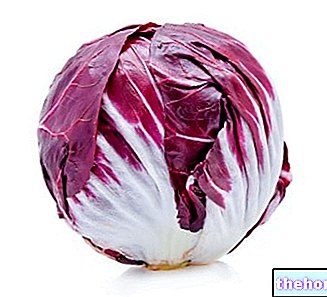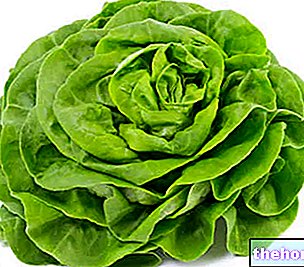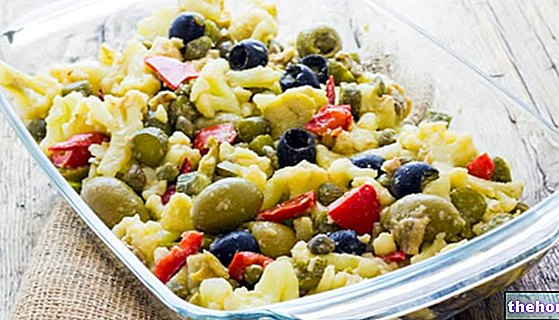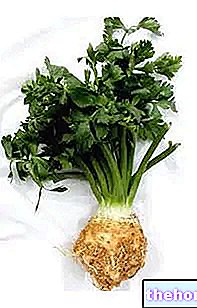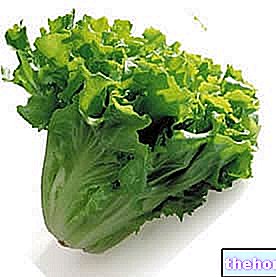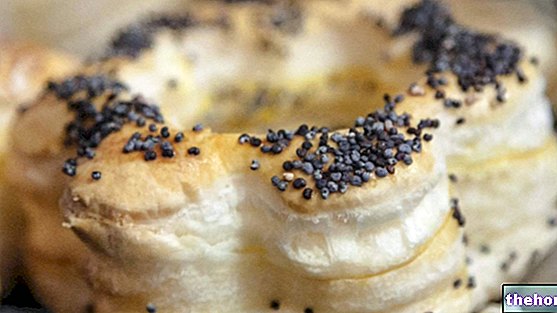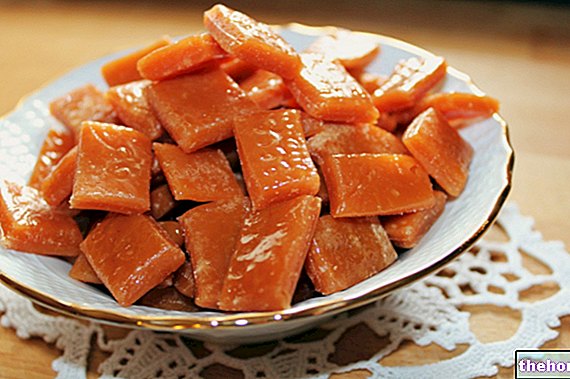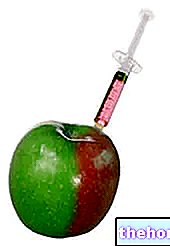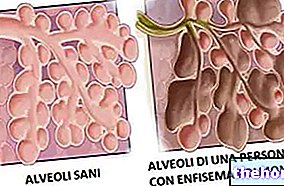Generality
The generic term chicory identifies a group of herbaceous plants belonging to the family of Asteraceae and to the Genre Cichorium.

Hints of cultivation
Chicory prefers fertile, deep, fresh and well-worked soils; the seedbed for green-leaved chicory must be prepared in spring, while that for radicchio between the end of May and July. The transplanting of seedlings born and developed in the nursery is very effective, as long as they are placed at a distance of 20-25cm. "one from the other." Chicory watering should be done without wetting the leaves. Harvesting should be done when the size based on the variety is reached.
Variety of chicory
Leaf chicory
- Green-leaved chicory: variety for fresh consumption characterized by large, more or less enveloped leaves; in this group we remember the Casalese sugar loaf chicory, the Wild chicory from the field, the Spadona chicory for cutting, the Zuccherina di Trieste chicory and the Bionda cutting chicory.
- Chicory with colored leaves: winter varieties universally known as "red radicchio"; they are mainly used fresh in salads. Among them we remember the red radicchio of Chioggia, the red radicchio of Treviso (early and late), the red radicchio of Verona, the variegated radicchio of Castelfranco and the red radicchio of Lusia.
- Chicory from leaves and stems: varieties to be cooked or cataloged; there are varieties with smooth and narrow leaves (Pugliese or Brindisina chicory), with jagged leaves (Abruzzese chicory), with wide and whole leaves (Chioggia chicory) and compact head with white and crunchy shoots (Galatina chicory).
Root chicory (or with thick roots)
- we remember the Chiavari or Genovese root, the Chicory from Root (used to prepare coffee substitutes), the Chicory of Soncino (Scorzamare), the Chicory of Magdeburg and the Chicory Witloof (obtained by forcing the endive or Belgian endive, also takes the name of Brussels chicory).

By virtue of the wide heterogeneity that distinguishes the genus of chicory, ONLY those that (in popular language) are associated with this name will be described below: field chicory (specifically described in the article Catalonian chicory - asparagus chicory) And cut chicory.
Nutritional characteristics
Chicories are therefore herbaceous plants with a more or less bitter taste which, from a gastronomic point of view, can be eaten raw or cooked. They all have an excellent vitamin, mineral, antioxidant, dietary fiber and water content. The chicories to be consumed mainly raw provide a greater supply of live and active vitamins, while the cooked ones (more digestible and requiring larger portions) have a more intense effect on the modulation of absorption and on intestinal peristalsis.
Herbal applications and phytotherapeutic properties of chicory are listed in this article.
Nutritional composition of Chicory - Reference values of the INRAN Food Composition Tables

Other Foods - Vegetables Garlic Agretti Asparagus Basil Beets Borage Broccoli Capers Artichokes Carrots Catalonia Brussels sprouts Cauliflower Cabbage and Savoy cabbage Red cabbage Cucumber Chicory Turnip greens Onion Sauerkraut Watercress Edamame Chives Chanterelles Flour Cassava Flowers Pumpkin Flour Edible Flowers Pumpkin Seasonal Fruits and Vegetables Endive Salads and Salads Strengthening Salad Lettuce Aubergines Vegetables Nettle Pak-Choi Parsnip Potatoes American Potato Peppers Pinzimonio Tomatoes Leeks Parsley Radicchio Turnips Red Turnips Radishes Rocket Shallots Endive Celery Celeriac Seeds Sprouted Spinach Truffle Valianamberi or Jerusalem artichoke laxatives Saffron Pumpkin Zucchini Vegetables - Nutritional properties OTHER VEGETABLE ITEMS Categories Food Alcoholics Meat Cereals and derivatives Sweeteners Sweets Offal Fruit Dried fruit Milk and derivatives Legumes Oils and fats Fish and fishery products Cold cuts S pezie Vegetables Health recipes Appetizers Bread, Pizza and Brioche First courses Second courses Vegetables and Salads Sweets and Desserts Ice creams and sorbets Syrups, liqueurs and grappa Basic preparations ---- In the kitchen with leftovers Carnival recipes Christmas recipes Light diet recipes Women's Day, Mum, Dad Recipes Functional Recipes International Recipes Easter Recipes Recipes for Celiacs Recipes for Diabetics Recipes for Holidays Recipes for Valentine's Day Recipes for Vegetarians Protein Recipes Regional Recipes Vegan Recipes

